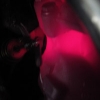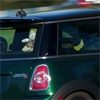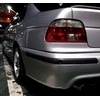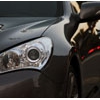Boards
밑에 한 분이 사고소식을 올려주셨지만 미국 IndyCar League에서 뛰던 Dan Wheldon (댄 웰든) 선수가 경기중 사망하는 사고가 발생하였습니다. F1 Korea GP 직후에 일어난 일입니다.
웰든이라는 선수를, 그리고 이 선수가 F1쪽에 진출한 선수들과 친분이 깊었다던 것을 이번에 알게 되어서 좀 더 깊게 보게 되었습니다.
많은 선수들이 추모의 글들을 남겼는데 이 중 마크 웨버가 BBC 사이트에 올린 글을 읽고 왠지 회원분들과도 나눴으면 좋겠어서 번역을 해서 올려봅니다. 제가 전문 번역가가 아니어서 원뜻을 다 살리지 못했을수도 있겠지만 그래도 메세지 전달은 될 것이라고 생각합니다.
우리가 열광하는 모터스포츠는 사실 죽음과 항상 맞닿아 있다는 것이 이번에 다시 상기가 되었습니다. 세나의 사고로 F1에도 엄청난 안전기술이 발달하게 되었듯이 댄 웰든 선수의 죽음이 헛되지 않기를 기원합니다. 그리고 현재 모터스포츠에 종사하는 모든 분들께도 경의를 표합니다.
Rest in peace, Mr. Dan Wheldon.

------------------------------------------------------------------------------
이글을 지난 일요일 라스베가스 인디카 레이스에서 작고한 고인 Dan Wheldon에게 바칩니다.
나는 댄과 직접 레이스를 한 적은 없지만, 96-97년 영국의 레이싱 스쿨에서 인스트럭터를 함께 할 적에 많은 시간을 그와 보냈었었다. 댄은 정말 좋은 녀석이었다. 그당시 나는 호주에서 영국으로 넘어간지 얼마되지 않아서 동료들과 서먹서먹한 상태였지만 댄과 나는 비슷한 나이에 하는 일도 같고 공통점도 많았던 동료여서 농담도 많이 하면서 즐겁게 지냈던 기억이 난다. 그러고 얼마 지나지 않아 댄은 미국에서 레이싱을 하러 떠났고 나는 유럽에 남아 레이스를 계속하였지만 그가 유럽에 올 때마다 그를 만나는 것을 좋아했었다.
내가 사고에 대해서 들은 것은 싱가폴 공항에서 시드니행 비행기를 타기 위해 기다리고 있을 때였다. 내 파트너인 앤의 아들 루크로부터 문자가 왔는데 큰 추돌사고가 나서 많은 레이서들이 병원에 이송되었다는 것이었다. 그 중 한명은 나랑 친한 윌 파워여서 나는 그에 대해 많은 걱정이 들었다. 나는 사실 인디카 리그에 아는 레이서들이 많다. 다리오 프란치티, 라이언 브리스코, 토니 카난 등등.
그런 소식을 들었을 때는 모두가 무사하기를 빌며 또 아무 일 없을 것이라고 생각할 수 밖에 없다. 그러나 한시간쯤 후에 루크로부터 받은 문자는 댄이 사망하였다는 소식이었다. 정말 끔찍한 상황이라고밖에 말할 수가 없다. 나는 내가 들은 내용을 믿고 싶지 않았지만, 나중에 티비로 상황을 지켜본 후에는 그정도 사고에는 심각하게 부상을 입은 레이서가 나올 수 밖에 없다는 생각이 들었다. 정말이지 끔찍하였고 그 상황에서 레이서들이 빠져나올 수 있는 가능성은 없었다고 생각한다. 그 상황에서 레이서들이 할 수 있는 방법은 없다. 레이서의 실력은 무용지물이 되고 경주차가 날라가는 것을 꼼짝없이 지켜볼 수밖에 없게 된다.
인디카 리그는 이번 사고에서 중요한 교훈을 얻어야 한다. 관계자들이 반드시 해결해야 할 부분은 사고가 났을 때 경주차가 공중으로 날라가지 않도록 대책을 마련해야 하는 부분이다. 오피셜들이 내년에 새로 선보일 신형 경주차에 댄이 테스트 드라이버였다는 점이 아이러니하게 와닿는다. 신형 경주차는 뒷바퀴가 덮혀 있는데 이는 경주차끼리의 바퀴가 접촉해서 공중으로 날라가 버리는 상황을 획기적으로 막아줄 수 있다.
나는 오벌트랙에서 경주해본 적은 없지만 경험이 있는 레이서들과 얘기해보면 그룹으로 무리지어 주행해야 한다는 특성을 맘에 들어 하지 않았다. 특히나 라스베가스같이 오벌의 길이가 짧은 트랙에서는 더 말이다.
그런 트랙에서 무리지어서 그저 달리기만 하는 것은 레이스라고 할 수가 없다. 그저 지속적인 슬립스트림에 노출되고 드라이버가 다른 레인으로 들어가려고 움직이는 순간 사고가 발생할 수 있다. 어느정도의 속도에서는 괜찮겠지만 오픈휠 머신으로 시속 220마일 (시속 350키로)로 달리는 상황에서 바퀴끼리 닿는다면 머신은 공중으로 5-6미터는 금방 떠버리고 누군가가 정말 심각하게 다칠 수 있다. 30대의 오픈휠 머신이 따닥따닥 붙어서, 브레이크는 차가워진채 350키로의 속도로 달리는 것, 이건 정말 아니다. 드라이버들은 레이스의 특성으로 이런 상황이 만들어진다는 것에 대한 검토가 필요하다고 생각한다.
댄이 사고를 당한 당시 전체 참가한 경주차들의 절반이 서로 붙어서 달리고 있었고 그 중 절반정도가 사고가 나면서 공중으로 날라가 버렸다. 이건 정말로 아니다.
다리오 (Dario)가 충돌 이후에 눈물을 흘리는 것을 본 일반인들은 어떻게 레이서들은 그런 끔찍한 사고를 보고 나서도 레이스생활을 지속할 수 있는지에 대해 의아해할 것이다. 나도 많은 사고를 당했다. 1999년에 르망 대회에서 공중으로 날라가 전복된 메르세데스 벤츠 머신에 나는 타고 있었고 사고 순간, 찰나이지만 나는 정말 죽을 것이라고 생각했다. 독자들 중에는 작년에 발렌시아에서 생겼던, 내 머신이 로터스의 하이키 코발라이넨의 머신의 뒷바퀴와 접촉해 공중으로 날라가버렸던 사고를 기억할 것이다. 공중으로 뜬 머신은 전복된 상태로 트랙에 떨어졌고 다시 뒤집어지면서 벽에 처박혀 버렸다. 그러나 인디카와는 다르게 F1의 안전성은 많은 발전을 이뤘고, 인디카와는 어쨌든 다른 타입의 레이스이다. 그렇다고 위험이 전혀 없는걸 모르는 건 아니다. 발렌시아 사고 역시 내가 어떻게 될지 모르는 상황이었다는건 분명하니깐. 그러나 나는 F1이 인디카보다는 안전하다고 생각한다. 또는 랠리나 모토GP같은 레이스와 비교해봐도. 이 믿음이 있기에 내가 레이스를 계속 할 수 있다.
대부분의 경우에 나의 운명은 나의 손에 달려 있다. 그러나 내가 통제할 수 없는 상황이 있을 때가 세 경우가 있는데 비가 오거나 다른 레이서가 나를 위험하게 만드는 상황이나 경주차의 트러블이 생길 경우가 그렇다. 그게 레이스이다.
10대 후반이나 20대 초반에는 두려운 것이 없다. 그러나 나이가 들면서 좀 더 현명해지게 되면 두려운 것들에 대한 생각을 하게 된다. 그러나 그럼에도 여전히 헬멧을 쓰면 레이서들은 불안한 감정은 잊고 레이스에 최선을 다한다.
프로레이서로서의 옳은 일은 머신을 한계까지 몰아붙이며 조종하는 것이고 그것은 레이서 스스로를 위험한 상황에 넣을 수도 있다는 것을 뜻한다.
우리는 대부분의 경우 우리가 괜찮을 것이라고 생각한다. 충돌 상황에 처하더라도 말이다. 그냥 그 믿음을 가지고 다시 경주차에 올라타고 또 달린다.
그러나 미국에서 경주하는 레이서들이 (인디카 레이서들) 지금 마주한 문제는 우리들의 것과는 다른 상황이란 것이 내 생각이다.
-----------------------------------------------------------------------------------------------
발췌: BBC Sport website (http://news.bbc.co.uk/sport2/hi/formula_one/15376777.stm)
Mark Webber Column - by Mark Webber (Redbull Racing Team Racer)
I want to devote most of this column to Britain's Dan Wheldon, who died following a crash at the Las Vegas IndyCar race on Sunday.
I never raced against Dan but I spent a lot of time with him down at Brands Hatch when we were both instructors at the racing school in 1996-97. It was difficult not to hit it off with him - he was a likeable bloke. At that stage, I wasn't completely flush with mates in the UK - it wasn't long since I had come over from Australia - and Dan was someone who was of a similar age, doing a similar sort of thing, with whom I had a lot in common. We had a lot of laughs, plenty of banter and lots of fun with the punters.
Dan set his life up in America not long after that, while I was racing in Europe. But I always loved to bump into him whenever he was in the UK, at a motorsport awards ceremony or whatever.
I was at Singapore airport waiting for a flight to Sydney when I first heard about the crash. I got a text message - from Luke, the son of my partner, Ann - telling me there had been a huge shunt and a lot of guys had been taken to hospital. They had nowhere to go. Skill does not come into it. It's down to how the car reacts, what angle it goes at. You're an absolute passenger in that situation
It was extremely nasty and a lot of the drivers didn't have a chance of avoiding it. They had nowhere to go. Skill does not come into it. It's down to how the car reacts, what angle it goes at. You're an absolute passenger in that situation.
IndyCar can learn a heavy lesson from Sunday's crash. What organisers certainly have to do is work out how to stop cars leaving the ground and flying into the air in such situations. It is a sad irony that Dan was the test driver for a new car that officials plan to introduce next year. It has enclosed rear wheels, which will definitely help because front wheels won't be able to go over rear wheels any more, which is one of the major factors that makes cars take off.
I've never raced on an oval track but I've spoken to a lot of the guys who have. One thing they don't like is the element of pack racing, especially on a short oval such as Las Vegas. Running three wide on a track like that is not really racing. You're just getting a slipstream. Drivers look to move into a different lane - from the top to the bottom of the track, say - and things can happen. At certain speeds, that is fine and no-one gets badly injured. But when you're doing 220mph in an open-wheeler, the cars can leave the ground by five or six metres and someone's going to get seriously hurt. To have 30-odd single-seaters, nose to tail, with cold brakes. it's too much. Drivers feel this needs looking at.
In the accident that killed Dan, nearly half the field were running together and half of them ended up in the air. That's not right. The crash affected a lot of people - you may have seen the footage of Dario, for example, sobbing in his car afterwards - and the public often wonder why racing drivers carry on after incidents like this. I've had my share of bad accidents. Two Mercedes sports cars flipped on me in three days at Le Mans back in 1999. In the second of those shunts, I did think for a split second that I probably wasn't going to make it. I'm sure you will have seen my accident in Valencia last year, too, when I took off after hitting the back of Heikki Kovalainen's Lotus. The car landed upside down before skidding into the barriers the right way up.
But safety has come on a long way in F1 and it's a different type of racing to IndyCars anyway. Don't get me wrong, I know there are risks. Valencia could have gone either way for me, that's completely clear. But I feel it's safer than IndyCars. Or rallying or MotoGP, for that matter. That gives me confidence to race.
The vast majority of the time, my fate is in my hands. But there are three things that might let me down one day: the rain, what someone else might do that could put me at risk, and mechanical failure. That's racing.
When you're in your late teens and early-20s, you never think about that stuff. But, when you get a bit older, you think about it more because you're a bit wiser. Still, when the helmet goes on, you don't think about the negative stuff. You race hard and do what's right.
As a professional racing driver, what's right is to drive the car completely on the limit and get as much as you can out of it. That means you put yourself in dangerous situations. We know that generally everything will be OK, even when we do crash. We simply get back in the car and go again.
But I think it's a different question for the guys in America at the moment.

그나저나 메르세데스의 그 하늘로 날아가버리는 차량 드라이버가 마크 웨버였나요? 첨알았습니다ㅎㅎ
ps.웨버가 해밀턴을 추월 못한이유는 피트전략 때문이었군요.. 예상치못한 해밀턴과의 동시피트인때문이었다니 아쉽습니다ㅎ
하지만 재미있는 상위권싸움덕택에 눈은 호강했었다는...

인디카와 같은 오픈휠 오벌트랙 레이스는 위험요소가 너무 많다고 생각합니다. 나스카와 같은 박스카의 경우 사고가 일종의 눈요기거리가 되기도 하지만 (그만큼 차체가 튼튼하고 드라이버가 노출되어 있지 않아 상대적으로 안전하니까요) 오픈휠차량들이 순식간에 뒤엉켜버리는 것은 보는 것만으로도 너무 끔찍하더군요.

깔끔한 번역글 잘봤습니다. 어색한 문장 하나없이 잘 읽었습니다 ^^
저도 사고 동영상을 보는데 등꼴이 오싹하더라구요. 인디카는 아니지만 오벌트랙을 타는 나스카 경기에서 2001년에 데일 언하트가 사망이후 10년만에 댄 웰든이 사망했는데 오벌트랙에 대한 뭔가의 조치가 확실히 필요한것 같습니다.

캐나다 토론토에서 열리는 Cart 경기를 직접 보러 갔을 정도로 제가 20 대 때였던 90 년대엔
월드 Cart 시리즈를 좋아했었는데요(인디카) 당시 무척 좋아하게 된, 떠오르던 신예 그렉 무어 (Greg Moore) 를 아시는 분이 계실지 모르겠습니다. 너무나도 곱상하고 착하게 생겼던... 그 역시 99 년에 저런 오벌 트랙에서 사망했죠... 오랜만에 TV 로 풀 경기를 보고 있었는데...
이번 사고도 너무나 안타깝고 올려주신 마크 웨버의 글을 읽어보니 정말로 위험하고도 넌센스일수도 있는 경기구나 라는 생각이듭니다... 좋은 곳으로 가셨길 바라며 다시는 이런 일이 없기를...











여러 모로 훌륭한 번역 잘 봤습니다. 저도 이번 사고로 댄 웰던에 대해 알게 됐는데, ... 안전에 있어서 둘째가라면 서러울 미국에서 이런 사고가 일어났다는 것 의아하면서도 가슴아픈 일입니다.
PS. 원문 아래쪽에 웨버가 해밀턴을 끝내 추월하지 못한 이유에 대해 간단하게 코멘트해두었네요.